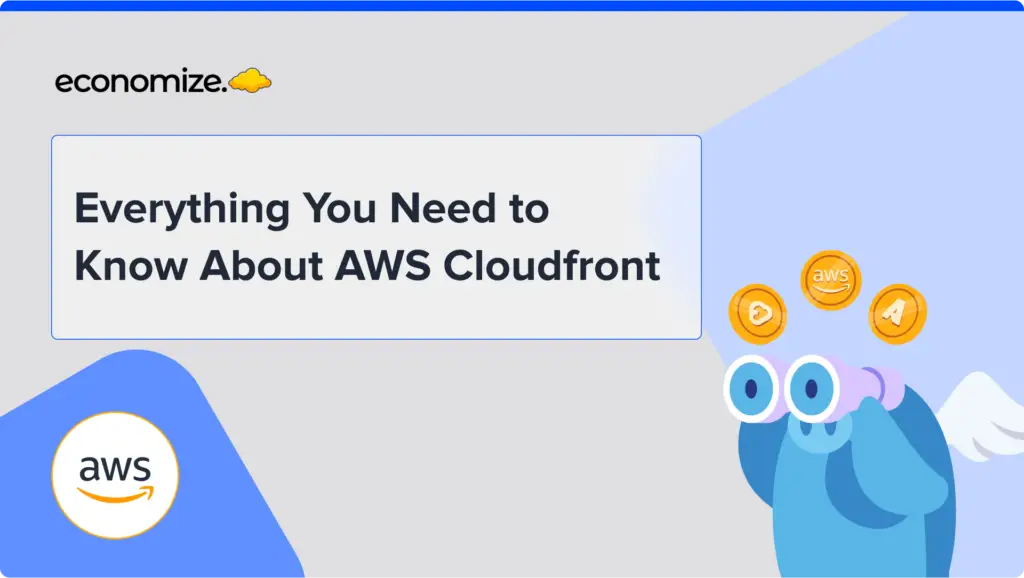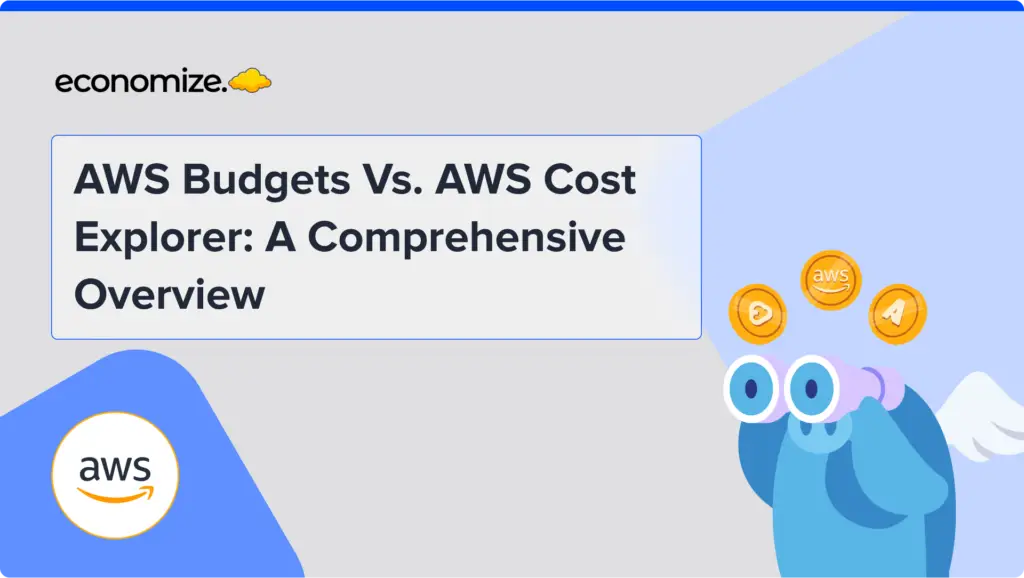Today, one in five organizations has 75% of its workloads running on cloud-based infrastructure. Cloud adaptation grows each day as organizations adopt new technologies and focus more on agility, scalability, and flexibility.
As enterprises increasingly move their workload to the cloud, managing your cloud cost and keeping your cloud bills in check has become essential. Both AWS Billing Alert and AWS Budget play a major role in this regard for organizations utilizing AWS services. These tools allow businesses to break down their spending by service, region, and time period, giving you the insights needed to optimize your resource usage.
What is AWS Budget?
AWS Budgets is designed to help organizations manage their cloud costs and usage with precision and ease. It enables users to set specific budget targets, whether they are related to cost, usage, or Reserved Instances (RIs) and Savings Plans—and provides detailed insights into how your cloud resources are being utilized. By setting custom alerts, you can stay informed about both actual and forecasted expenditures, allowing them to take action before exceeding predefined thresholds.
For example, you can set a monthly cost budget and receive notifications when your spend reaches 80% of your budget or even apply automated actions, such as restricting additional resource provisioning through IAM policies.

AWS Budgets also allows organizations to monitor specific usage metrics, like staying within service limits or tracking AWS Free Tier usage, helping businesses ensure cost control and resource optimization. With daily utilization tracking for RIs and Savings Plans, users can be notified if their usage falls below a certain threshold. These updates, which occur up to three times a day, give businesses near-real-time visibility into their cloud expenditures.
How does AWS Billing Alert works?
AWS Billing Alerts help users monitor and manage their cloud spending by sending notifications when costs reach certain thresholds. AWS Billing Alarms are specific alarms in Amazon CloudWatch that monitor your AWS spending in real-time and send notifications when certain spending thresholds are crossed. They are designed for alerting purposes and provide a more immediate way to track costs.

These alarms are designed to send immediate notifications when spending exceeds predefined thresholds, helping you quickly address unexpected charges or spending spikes. While AWS Billing Alarms provide instant alerts based on cost metrics, they do not offer the same level of detailed budget management or reporting as AWS Budgets. Instead, they are ideal for users who need immediate awareness of cost issues rather than long-term budget tracking.
AWS Billing Alert vs. AWS Budgets
Though both AWS Billing Alerts and AWS Budget are focused on your cloud financial management, each differs in its primary functions. AWS Budgets focus on proactive cost control and budget monitoring. It enables businesses to define spending limits, receive alerts, and take automated actions to prevent overspending. AWS Billing Alerts, integrated with Amazon CloudWatch, provides real-time monitoring and alerting based on specific cost metrics. It is ideal for those who require real-time alerts to address immediate cost issues.
AWS Billing Alarm is ideal for:
- Providing immediate alerts when spending thresholds are breached
- Detecting sudden increases in AWS expenses to prevent unexpected charges and manage costs effectively.
- Offering straightforward setup via Amazon CloudWatch for users needing direct cost alerts without complex configurations.
- Monitoring and alerting on detailed billing metrics or daily expenses for granular financial oversight.
AWS Budgets is ideal for:
- Setting cost or usage limits and receiving alerts before overspending.
- Proactively managing cloud usage through customizable budgets and automated actions.
- Monitoring actual and forecasted spending to ensure financial control.
- Tracking utilization of Reserved Instances (RIs) or Savings Plans to optimize resource allocation.
Here is a differentiation table comparing AWS Billing Alarm and AWS Budgets:
| Feature | AWS Billing Alarms | AWS Budgets |
|---|---|---|
| Primary Purpose | Real-time monitoring and alerting for cost spikes | Proactive cost control and budget management |
| Notification Timing | Immediate alerts based on cost thresholds | Alerts based on approaching or exceeding budget limits |
| Configuration | Simple setup via Amazon CloudWatch | Detailed setup including various budget types and filters |
| Alert Type | Alerts triggered by specific cost metrics or spending levels | Alerts triggered by budget thresholds (e.g., 80%, 100%) |
| Cost Metrics Tracking | Monitors and alerts on specific billing metrics | Tracks overall costs, usage, and reserved instances |
| Detailed Reporting | Limited reporting capabilities | Provides detailed reports and forecasts on spending and usage |
| Integration | Integrates with CloudWatch for monitoring | Integrates with AWS Cost Explorer for detailed analysis and forecasting |
| Usage Scenarios | Ideal for detecting and reacting to unexpected cost increases | Ideal for setting and tracking long-term budgets and managing financial limits |
Is There a Better Alternative?
Both AWS Billing Alerts and AWS Budgets are valuable tools for managing AWS costs, but they come with their own sets of limitations. Setting up AWS Budgets can be complex, especially for organizations with diverse and intricate cost structures. While AWS Budgets allows cost tracking, the data is updated up to three times a day, which can result in a delay between actual spending and budget tracking. This lag may affect real-time decision-making and the ability to react immediately to cost overruns.
WS billing alarms are a useful feature for monitoring and managing your AWS costs, it can only be set at a monthly level, which may not be granular enough for organizations with complex billing structures. Also, the notifications from billing alarms are often basic and might not provide detailed insights into which specific resources or services are causing cost overruns.
With Economize, you can easily overcome these limitations and integrate the functions of both tools into a unified platform.

What can you do with Economize?
- Personalized Cost-Saving Recommendations: Unlike AWS Budgets, which provide basic cost tracking and budgeting features, Economize helps you uncover hidden optimization opportunities with expert recommendations, ensuring you can fine-tune your spending with precision.
- Comprehensive Organization View: This feature provides granular insights into spending patterns, enabling you to understand exactly where your money is going.
- Potential Savings: Economize provides a clear breakdown of potential savings for each recommendation, giving you a transparent view of how adjustments can impact your bottom line.
- Centralized Asset Inventory: Keep track of all your cloud assets in one centralized location with Economize. This feature simplifies asset management and ensures that you have a comprehensive view of your resources, helping you identify opportunities for savings more effectively.
- Root Cause Analysis: Economize includes a root cause analysis feature to uncover the underlying reasons for unexpected cost spikes. This detective-like capability helps you diagnose and address issues that contribute to cost increases, a functionality that AWS Billing alerts and AWS Budgets do not directly provide.
- Cost Timeline Tracking: Track changes in your cloud costs over time with Economize’s cost timeline feature. This allows you to monitor spending trends and address unexpected spikes proactively.
Conclusion
In conclusion, both AWS Billing Alerts and AWS Budgets enable organizations to maintain control over their spending, avoid cost overruns, and proactively manage your cloud environment. However, for companies with complex cloud architectures or diverse workloads, there may be limitations in the depth of insight and flexibility offered by AWS’s native tools. This is where Economize proves valuable, extending beyond the standard billing and budgeting features
By combining the strengths of AWS Billing Alerts, AWS Budgets, and tools like Economize, organizations can gain a holistic view of their cloud financials, allowing them to fine-tune operations, maximize savings, and ensure long-term scalability in a cost-efficient manner. Whether you’re managing basic payment needs or seeking advanced optimization opportunities, these tools provide a solid foundation for strategic cloud financial management.
FAQs:
Q. What is the billing cycle of AWS?
A. AWS operates on a monthly billing cycle, where customers receive an invoice at the beginning of each month based on the previous month’s usage. Payments are due within 30 days of the invoice being generated.
Q. How does billing work in AWS?
A. AWS billing works by tracking and calculating costs based on your usage of AWS services, which are billed on a pay-as-you-go model. Costs are itemized and categorized by service, region, and account, with consolidated billing available for multiple accounts under an organization.
Q. What is the difference between AWS budgets and cost explorer?
A. AWS Budgets vs Cost Explorer: AWS Budgets allows you to set spending or usage limits and receive alerts when thresholds are reached, while AWS Cost Explorer provides detailed visual reports and insights to analyze past and forecasted AWS costs. AWS Budgets is more proactive for financial control, whereas Cost Explorer focuses on historical and trend analysis.
Q. How much does Economize Cost?
A. Economize offers a flexible pricing model tailored to meet different organizational needs.You can choose a specific pricing plan that aligns with your organizational needs and cloud budget.
Feeling the Weight of High Cloud Bills?
Controlling your cloud budget doesn’t have to be complicated. With Economize, we make it easy to slash your costs by up to 30%. Schedule a free demo today and begin your journey towards more manageable cloud spending. Start seeing the benefits in your budget right away.








